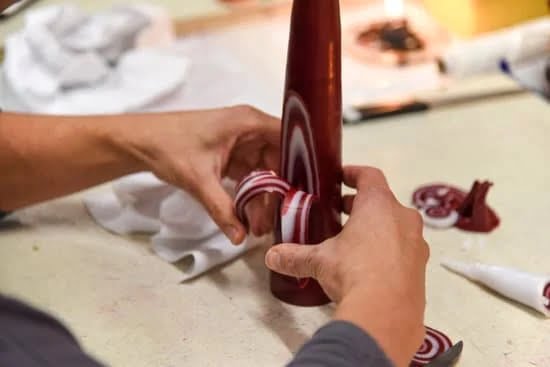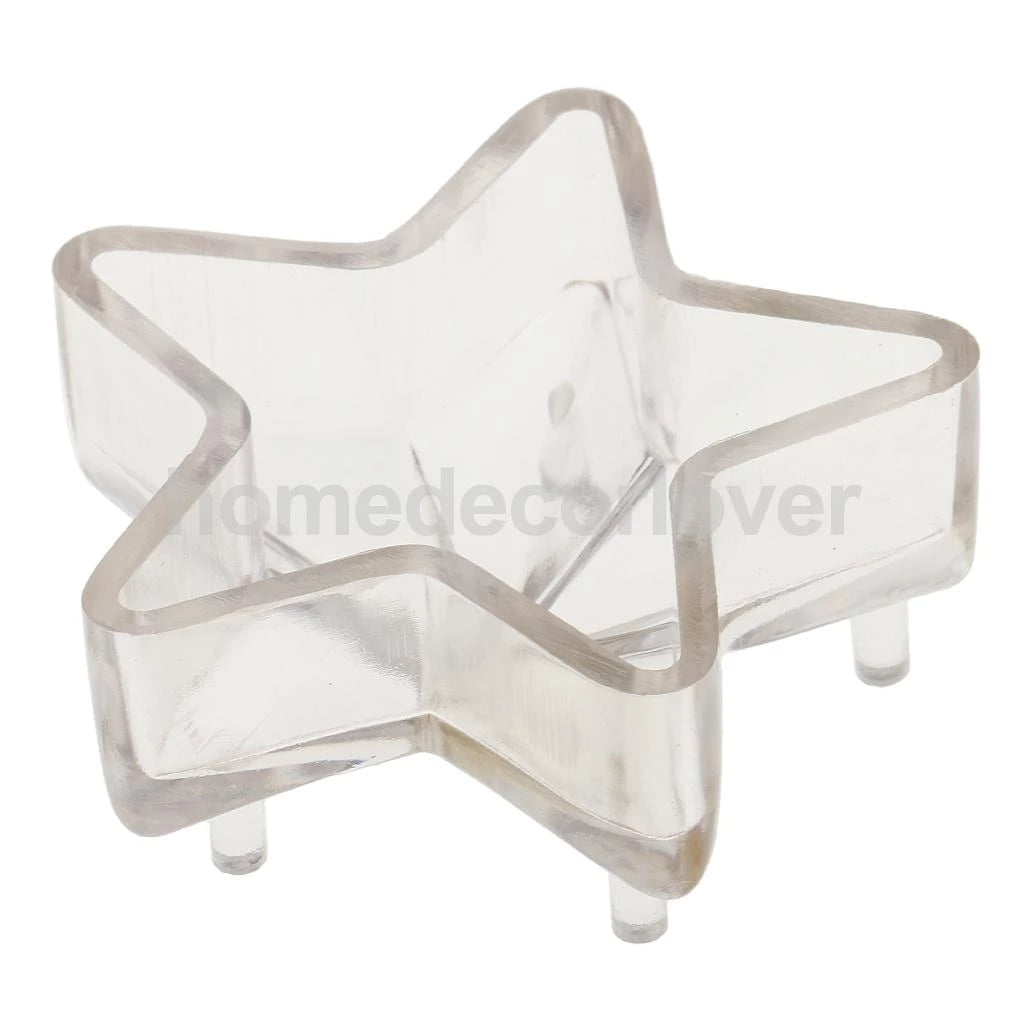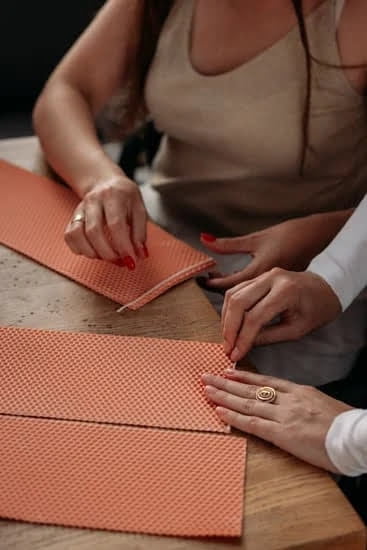Cooking oil candles have gained popularity in recent years as a DIY alternative to traditional wax candles. These homemade creations not only provide cozy lighting but also offer numerous benefits for the environment and your wallet. In this article, we will explore the reasons behind the growing trend of making cooking oil candles and why they are an excellent choice for any candle enthusiast.
One of the primary advantages of using cooking oil to make candles is its accessibility. Most households already have some form of cooking oil readily available in their pantry, eliminating the need for purchasing specialized candle wax. Not only does this save money, but it also reduces waste by repurposing an item that would otherwise be discarded.
Furthermore, cooking oil candles are an eco-friendly option compared to conventional paraffin wax candles. Traditional wax can contain harmful chemicals and emit toxins when burned, contributing to indoor air pollution. In contrast, using vegetable or plant-based oils minimizes these risks and allows for cleaner burning.
Beyond these practical considerations, making a cooking oil candle can be a fun and creative project. With various types of oils available on the market, you can experiment with different scents and even add colors to make your personalized candle. Whether you are looking to create a peaceful ambiance or enhance a special occasion, learning how to make a cooking oil candle opens up endless possibilities for crafting unique lighting solutions.
In the following sections of this article, we will dive deeper into the safety precautions one must take when working with open flames, outline the materials needed for making a cooking oil candle, discuss different types of cooking oils and their burn times before guiding you through detailed step-by-step instructions on creating your own personalized creation.
Additionally, we will provide helpful tips for achieving ideal burning conditions along with troubleshooting advice for common issues that may arise during the process.
So let’s get started on this illuminating journey into the world of making a cooking oil candle.
Safety Precautions
When it comes to making a cooking oil candle, safety should always be a top priority. Working with open flames can be dangerous if proper precautions are not taken. By following these safety guidelines, you can ensure a safe and enjoyable candle-making experience.
1. Work in a well-ventilated area: It is crucial to work in a space with good air circulation to prevent the build-up of fumes from the burning cooking oil. Open windows or use fans to keep the air flowing while you work.
2. Use heat-resistant containers: Make sure to choose containers that can withstand high temperatures without melting or cracking. Glass containers are often recommended for making cooking oil candles as they are less likely to break under heat.
3. Keep flammable materials away: Before you start making your cooking oil candle, clear the surrounding area of any flammable materials such as curtains, papers, or plastic objects. This will help prevent accidental fires and ensure your safety.
4. Never leave unattended flames: It is important never to leave your cooking oil candle unattended when it is lit. Always remember to extinguish the flame before leaving the room or going to bed.
5. Keep children and pets away: As with any open flame, it is crucial to keep children and pets at a safe distance when working with cooking oil candles. Accidents can happen quickly, so it’s best to exercise caution and avoid any potential hazards.
By following these safety precautions, you can enjoy the process of making a cooking oil candle without compromising your well-being or that of others around you.
Materials Needed
To make a cooking oil candle, you will need a few basic materials and ingredients. Here is a list of everything you will need to get started:
- Cooking oil: Any type of cooking oil can be used to make a cooking oil candle. Some popular options include vegetable oil, olive oil, and coconut oil.
- Wick: A cotton or hemp wick is essential for creating a steady flame in your candle. You can purchase pre-made wicks or make your own by coating the string in wax.
- Container: Choose a heat-resistant container to hold your cooking oil candle. Glass jars, metal cans, or ceramic dishes are all suitable options. Make sure the container is clean and dry before using it.
- Scissors or wire cutters: These tools will be needed to cut the wick to the desired length.
- Optional decorative items: If you want to personalize your candle, you can consider adding some decorative items such as dried flowers, herbs, or colored sand.
- Matches or a lighter: You will need a way to ignite the wick and start the flame for your cooking oil candle.
- Safety equipment: It’s important to prioritize safety when working with open flames. Make sure you have fire safety equipment on hand, such as fire extinguishers and baking soda.
Once you have gathered all the necessary materials and ingredients, you will be ready to move on to the next steps of creating your cooking oil candle. Remember to always exercise caution when working with open flames and follow proper safety guidelines throughout the process.
Choosing the Right Cooking Oil
Understanding Burn Times
When it comes to making a cooking oil candle, one important factor to consider is the burn time of the oil you choose. Different types of cooking oils have varying burn times, which can affect the overall longevity of your candle’s flame. It’s important to understand these burn times before making a decision on which oil to use.
Vegetable Oils
One common choice for cooking oil candles is vegetable oil. Vegetable oils typically have a moderate burn time, making them suitable for general use. Some examples of vegetable oils include canola oil, soybean oil, and sunflower oil. These oils generally provide a steady flame and can burn for several hours.
Olive Oil
Olive oil is another popular option for making cooking oil candles. It has a longer burn time compared to most vegetable oils and provides a warm and gentle flame. However, it’s important to note that olive oil tends to be more expensive than other options.
Specialty Oils
In addition to vegetable and olive oils, there are also specialty oils available for candle-making purposes. These specialty oils are specifically designed for candle use and offer longer burn times and better fragrance retention. Some examples include coconut oil and palm oil. These oils may come in solid form at room temperature but can be melted down before being used in the candle-making process.
It’s essential to consider both the desired burn time and budget when selecting the cooking oil for your candle. Each type of oil offers different benefits, so it’s worth experimenting with various options to find the perfect fit for your needs.
Step-by-Step Guide
Creating a cooking oil candle is a simple and enjoyable DIY project that anyone can do. With just a few easy steps, you can have a beautiful homemade candle that adds warmth and ambiance to your home. In this step-by-step guide, we will walk you through the process of making a cooking oil candle, from preparing the wick to choosing the right container.
1. Prepare the wick: The first step in making a cooking oil candle is preparing the wick. You can use either a pre-made cotton wick or create your own using cotton string. If you are making your own wick, make sure to choose a thick cotton string that can absorb the oil and sustain the flame. Cut out a length of string slightly longer than your chosen container.
2. Choose the right container: When selecting a container for your cooking oil candle, opt for one that is heat-resistant and non-flammable. Glass jars or ceramic containers work well for this purpose. Make sure that the opening of the container is wide enough to fit the wick through.
3. Fill the container with cooking oil: Now it’s time to fill your chosen container with cooking oil. Pour in enough oil to leave about half an inch of space at the top, as this will help prevent any overflow when lighting the candle.
4. Insert the wick into the container: Take your prepared wick and insert one end into the oil-filled container, making sure it reaches all the way to the bottom. To keep it in place, you can use a small bead or metal washer as an anchor at one end of the string.
5. Let it soak: Allow some time for your wick to soak up enough oil before lighting it. This usually takes around 30 minutes to an hour depending on how absorbent your wick is. This step is crucial as it ensures that the wick stays lit for a longer period of time.
Now that you have followed these steps, your cooking oil candle is ready to be lit and enjoyed. Making your own candles can be a fun and creative way to experiment with different scents and colors, so feel free to personalize your candle by adding essential oils or food coloring if desired. In the next section, we will share some tips for achieving an ideal burn and maximizing the lifespan of your cooking oil candle.
Tips for Ideal Burning
When creating a cooking oil candle, it’s important to optimize its burning time and ensure a steady flame. Here are some tips and tricks to achieve an ideal burn:
- Choose the Right Wick: The size and type of wick you use can greatly affect the burn time and flame quality of your candle. For a longer burn time, opt for a thicker wick. Cotton or hemp wicks tend to be good choices for cooking oil candles because they promote an even and steady flame.
- Trim the Wick: Before lighting your cooking oil candle, make sure to trim the wick to about 1/4 inch in length. This helps prevent excessive smoking, uneven burning, and flickering flames. Trimming the wick regularly throughout its use will also help maintain optimal burning conditions.
- Use a Stable Container: To ensure safety and stability during burning, choose a container that is sturdy and heat-resistant. Glass jars or ceramic containers are excellent options as they minimize the risk of accidents such as tipping or cracking due to heat exposure.
- Allow Sufficient Airflow: Adequate airflow around the flame is crucial for maintaining an even burn. Avoid placing your cooking oil candle in closed spaces or near drafts that could disrupt airflow. Finding the right balance between open space and draft-free environment will help achieve a consistent flame.
- Avoid Moving the Candle: Once lit, it’s best to keep your cooking oil candle in one place without moving it too often. Frequent movement can disturb the flame and cause an uneven burn pattern. If you need to relocate your candle, make sure it has cooled down sufficiently first.
By following these tips, you can maximize the burn time of your cooking oil candle while enjoying a steady and pleasant flame throughout its use. Experiment with different wick sizes and containers to find what works best for you and create an enjoyable ambiance in your home.
Personalize Your Candle
One of the great benefits of making a cooking oil candle is the ability to customize it to your liking. By adding scents or colors, you can create a unique and personalized candle that enhances the ambiance of any space. Here are some creative ideas for personalizing your cooking oil candle:
- Scented Oils: Adding essential oils or fragrance oils to your cooking oil candle can fill the room with delightful aromas. You can choose scents that promote relaxation, such as lavender or chamomile, or opt for more invigorating scents like citrus or eucalyptus. Experiment with different combinations and strengths to find your perfect scent.
- Natural Additives: Instead of using synthetic scents, you can also consider using natural additives such as dried herbs, flowers, or spices. For example, adding dried rose petals or cinnamon sticks to the oil before pouring it into the container can give your candle a beautiful visual appeal and a subtle natural fragrance.
- Coloring Agents: To add an artistic touch to your cooking oil candle, consider using coloring agents. There are various options available, including liquid dyes specifically made for candles or natural colorants like beetroot powder or turmeric. Just remember to use coloring agents that are safe for candles and won’t affect the performance of the wick.
| Scent | Color |
|---|---|
| Lavender | Purple |
| Citrus | Yellow |
| Vanilla | White |
| Sandalwood | Brown |
When adding scents or colors to your cooking oil candle, it’s important to start with only a small amount and gradually increase until you achieve the desired fragrance or hue. Be cautious not to overpower the scent or affect the performance of the candle. Remember to always follow safety guidelines and use proper ventilation when working with scents or coloring agents.
Personalizing your cooking oil candles allows you to express your creativity and make candles that are unique to your preferences. Whether you’re creating a soothing lavender-scented candle for your bedroom or a vibrant lemon-colored candle for a summer gathering, customizing your cooking oil candle can elevate the overall atmosphere of any space.
Safety Instructions and Storage
Proper Storage of Cooking Oil Candles
After creating your homemade cooking oil candle, it is important to store it safely to reduce the risk of fire accidents. Here are some guidelines to follow:
- Find a suitable storage location: Choose a cool, dry place away from direct sunlight and heat sources. Avoid storing candles near flammable materials such as curtains, paper, or fabrics.
- Use a proper container: Transfer the cooking oil candle into a heat-resistant container with high sides to prevent any potential spills or leakage.
- Keep out of reach of children and pets: Place the stored candles in an area where children and pets cannot access them, such as on a high shelf or locked cabinet.
- Label the container: Clearly mark the container as “Cooking Oil Candle” to ensure it is not mistaken for regular cooking oil or another type of candle.
Disposal of Cooking Oil Candles
Proper disposal of cooking oil candles is crucial to prevent environmental contamination and fire hazards. Follow these guidelines for safe disposal:
- Allow the candle to cool completely: Before disposing of any leftover wax or liquid, wait for the candle to cool down completely. Do not attempt to handle hot wax or liquid.
- Dispose of solidified wax properly: If you have leftover solidified wax, scrape it out of the container and dispose of it in your regular household trash.
- Recycle or reuse containers: Depending on the material, you can recycle glass jars or metal containers used for cooking oil candles. Make sure they are thoroughly cleaned before recycling.
- Dispose of liquid responsibly: If there is any remaining liquid in the container, pour it into a disposable container (such as an empty plastic bottle) and seal tightly before placing it in the trash bin.
- Never pour liquid down drains: Do not pour any leftover cooking oil candle liquid down sinks, drains, or toilets. It may clog the pipes and cause plumbing issues.
Fire Safety Precautions
While cooking oil candles can provide a cozy and relaxing ambiance, it is essential to follow fire safety precautions to prevent accidents:
- Never leave unattended: Always supervise your homemade cooking oil candle when it is burning. Never leave it unattended, especially if there are children or pets in the room.
- Keep away from flammable items: Place the candle on a sturdy surface, away from any flammable materials such as curtains, decorations, or loose papers.
- Install smoke alarms: Ensure that smoke alarms are properly installed throughout your home. Regularly check their functionality by testing them every month.
- Extinguish properly: When you are finished with your cooking oil candle, extinguish it by gently blowing out the flame or using a snuffer. Avoid smothering it with water or another liquid as it may cause splattering.
By following these safety instructions for storage and disposal and practicing fire safety precautions, you can enjoy your homemade cooking oil candles while keeping yourself and your surroundings safe from potential hazards.
Troubleshooting Common Issues
When making a cooking oil candle, it is important to be aware of potential issues that may arise and have solutions prepared in advance. This section will address some common problems that readers may encounter during the candle-making process and provide practical solutions.
One common issue is when the flame of the cooking oil candle flickers or goes out completely. This can be caused by a few factors, including an improper wick size or placement, a drafty environment, or using a low-quality cooking oil. To address this problem, ensure that the wick is centered in the container and trimmed to the appropriate length.
Avoid placing your candle near open windows or doors where drafts can affect the flame. Additionally, using a high-quality cooking oil with a low smoke point can help maintain a consistent flame.
Another concern that readers may face is excessive smoking from their cooking oil candle. This can occur if the wick is too long or if there are impurities in the cooking oil being used. To resolve this issue, trim the wick to a shorter length to prevent excessive burning and smoking. If the smoking persists, try filtering the cooking oil before using it in your candle to remove any impurities.
A third problem that readers may encounter is uneven burning of their cooking oil candle. This can cause one side of the candle to burn faster than the other, resulting in an unsteady flame. Uneven burning can be caused by an unevenly placed wick or an obstructed container opening. To address this issue, ensure that your wick is centered properly when placing it in the container and avoid any obstructions around it that could disrupt airflow.
By being aware of these common problems and their solutions, readers will have greater success when making their own cooking oil candles. Troubleshooting these issues will ensure longer burn times and more enjoyable experiences with homemade candles.
Conclusion
In conclusion, making a cooking oil candle provides numerous benefits and is a practical and cost-effective way to illuminate your home. Not only does it serve as an alternative light source during power outages, but it also creates a cozy and calming ambiance. By following the safety precautions outlined in this article, you can enjoy the beauty of an open flame without compromising your well-being.
To create a cooking oil candle, gather the necessary materials listed in this post and choose the right cooking oil based on burn time preference. The step-by-step guide provided here gives clear instructions on how to prepare the wick and container for optimal burning. Additionally, the tips for ideal burning will help you achieve a longer burn time and maintain a steady flame.
Furthermore, personalizing your cooking oil candle adds uniqueness to your creation. Experiment with scents or colors to create a soothing aroma or match your home decor. Just remember to always prioritize fire safety and properly store and dispose of your cooking oil candles.
If you encounter any issues while making your own cooking oil candle, refer to the troubleshooting section for solutions. With practice, you will improve your skills in candle-making and be able to enjoy the benefits this craft has to offer.
In summary, making a cooking oil candle allows you to have a versatile light source that is both functional and aesthetically pleasing. By following this article’s guidance on safety precautions, materials needed, choosing the right cooking oil, step-by-step instructions, burning tips, adding personal touches, safety instructions and storage protocols as well as troubleshooting common issues, you can confidently create your own unique candles at home.
So go ahead and dive into this craft – not only will it save money but it will also add warmth and charm to your living space.

Welcome to my candle making blog! In this blog, I will be sharing my tips and tricks for making candles. I will also be sharing some of my favorite recipes.





